JD Vance would be first Ohio resident to be vice president. Is first on ticket in 80 years
Ohio famously claims eight American presidents, but the Buckeye State has never had a current resident serve as vice president of the United States.
That will change if Ohio Sen. JD Vance becomes vice president in 2025. The Middletown native would hold the distinction of being the first Ohio resident and office holder to assume the role after being selected by Republican Donald Trump on Monday.
Ohio is the birthplace of three American vice presidents, but none of them lived here when they became vice president. There have been several major party vice presidential candidates from Ohio, but it's been a while.
"It's been 80 years I think since we've had a vice presidential candidate on the ticket," Gov. Mike DeWine said on CNN Monday after the Vance announcement.
JD Vance: VP pick once called Trump 'difficult to stomach.'
Here's a look at some of them:
Who is the last vice president from Ohio?: Charles Dawes, he also composed a #1 hit song
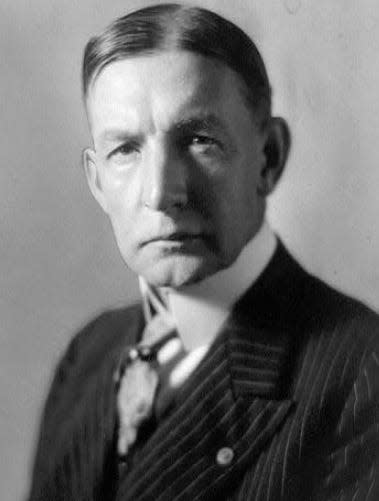
The last vice president born in Ohio was Charles Dawes, who served under President Calvin Coolidge from 1925-1929.
He was born in Marietta in 1865 and graduated from Marietta College and Cincinnati Law School. He left Ohio in 1887 and moved west to Nebraska. Prior to becoming vice president, he was the first director of the Bureau of the Budget.
Dawes was known for salty language and had the nickname of "Hell and Maria" Dawes, according to University of Dayton political science professor Christopher Devine.
Dawes won the Nobel Peace Prize in 1925 and is the only vice president to compose a hit song.
In 1912 he wrote a song called "Melody in a Major," that according to a 2011 article in Mental Floss, songwriter Carl Sigman put lyrics to and renamed it "It's All in the Game." The song hit No. 38 on the Billboard charts in 1951 recorded by Tommy Edwards, who then hit No. 1 with a rock n roll version of the song in 1958. The pop standard has since been recorded by Elton John, Nat King Cole, Barry Manilow and others.
Charles Fairbanks ran for vice president twice
Charles Fairbanks was born in Unionville Center, about 25 miles northwest of Columbus, in 1852. He graduated from Ohio Wesleyan University in Delaware in 1872.
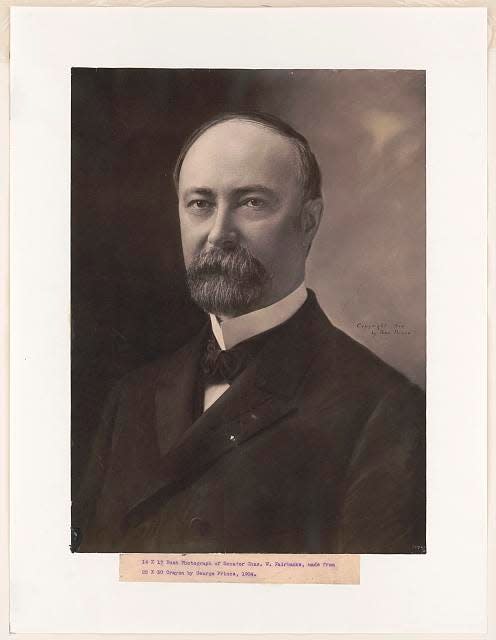
Fairbanks worked as a news reporter for the Associated Press for a while and actually covered politics. He received his law degree from Cleveland Law School and returned to Ohio Wesleyan to get a master's degree in 1875.
He moved to Indianapolis and eventually became a U.S. senator in 1897. When President Theodore Roosevelt ran for president in 1904, Republicans chose Fairbanks to join the ticket.
However once in office, Fairbanks was at odds with many of Roosevelt's policies. Roosevelt decided not to run again in 1908 and backed William Howard Taft.
Fairbanks made a run for the Republican nomination in 1908, but was defeated. In the election of 1912, where Roosevelt, Taft and Woodrow Wilson ran against each other, Fairbanks backed Taft instead of his old running mate.
He made another run for vice president in 1916 running with Charles Evans Hughes. They were defeated by Woodrow Wilson and Thomas Marshall. The race was close. Wilson won 49%-46% The electoral vote was 277-254. Wilson and Marshall did win Ohio.
Thomas Hendricks, the first vice president born in Ohio
Thomas Hendricks was the first vice president born in Ohio, but he died almost nine months after taking office.
Hendricks was born in Fultonham, near Zanesville, in 1819. He left Ohio as a baby when his parents moved to Indiana in 1820.
He served as a member of Congress, U.S. senator and Indiana governor. He ran for vice president with Democrat Samuel Tilden in the controversial election of 1876. Rutherford B. Hayes, also from Ohio, and William Wheeler won the election. It was the second election in U.S. history where the electoral vote winner did not have a plurality of the popular vote. The electoral vote was 185-184.
In 1884, Hendricks ran with Democrat Grover Cleveland and won. He served from March 1885 until he died in November 1885 of a heart attack. The vice presidency remained vacant after his death until 1889.
John Bricker, the last Ohioan to run for VP on a major-party ticket 80 years ago
The last time an Ohioan was on a major party ticket was in 1944. In that race, three-term Ohio Gov. John Bricker ran with Republican presidential nominee Thomas Dewey against President Franklin Roosevelt.
Back then Ohio governors served two-year terms.
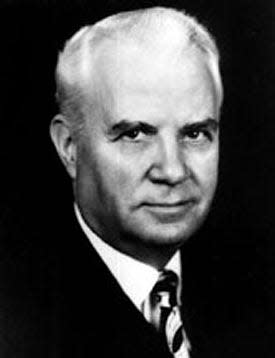
Before becoming governor in 1939, Bricker served as attorney general. He was also the solicitor in the Columbus suburb of Grandview Heights.
Bricker ran for the Republican nomination for president in 1944 for the chance to run against FDR. He came in second in the delegate count to Dewey, but then joined the GOP ticket with Dewey.
Dewey and Bricker won Ohio in the presidential election, but FDR, who was running for a fourth term, defeated them in a landslide. FDR won the electoral vote 432-99. Bricker later served in the U.S. Senate from 1947 to 1959.
Like JD Vance, Bricker was also an Ohio State University graduate. Bricker was born in Mount Sterling, 24 miles southwest of Columbus.
More: Who is JD Vance? Vice presidential candidate has multiple ties to Columbus
Bricker was shot at in July 1947 while he was in the subway tunnels to the U.S. Capitol by a former Capitol police officer who had recently lost his job. The attack made the front page of The New York Times on July 13, 1947. The article said Bricker identified the gunman as a "constituent with a fancied grievance." The gunman, William Kaiser, was also an Ohioan from Columbus. The article said Bricker survived the attack because of "good fortune and the bad marksmanship of his assailant."
Bricker and others ducked down as the subway car pulled off after the shots were fired. Once in the Capitol, Bricker went to the Senate chamber to vote on a tax bill. He served in the Senate until 1959.
He founded the Columbus-based law firm of Bricker & Eckler. He died in 1986. He is buried at Green Lawn Cemetery in Columbus.
Former Ohio Sen. Allen Thurman runs with Grover Cleveland in 1888
Allen Thurman wasn't born in Ohio, but his family moved from Virginia to Chillicothe when he was a child. He was a lawyer and became a member of Congress in 1844. He then became an Ohio Supreme Court justice, serving for a while as chief justice.
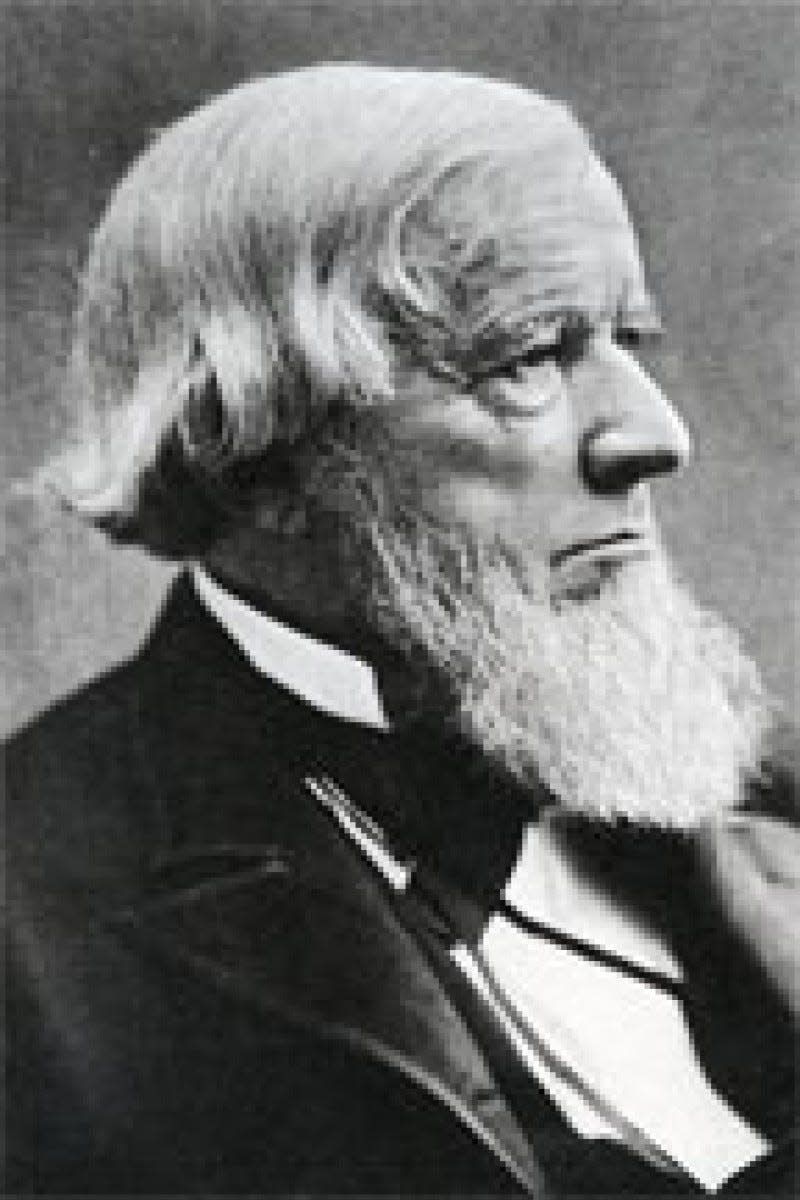
In 1867, Thurman was the Democratic nominee for governor, but lost to future President Rutherford B. Hayes. It was a close race. Hayes won with 50.3% of the vote to Thurman's 49.6%. The difference in the popular vote was fewer than 4,000 votes.
Eric Foner wrote in the book "Reconstruction: America's Unfinished Revolution, 1863–1877," that Thurman ran on a platform that included "No Negro Equality!" He was an opponent of Reconstruction.
He went on to serve in the U.S. Senate from 1869-1881. In 1879, he became president pro tempore making him second in line to the presidency after the vice president. Later in 1947, the position was moved back a spot and the speaker of the House became second in line.
According to his official biography with the Ohio Supreme Court, Thurman's name was placed in nomination for president at the Democratic conventions twice, but he didn't get the nomination. In 1888, Thurman was nominated for vice president to join the ticket with President Grover Cleveland.
Republican Benjamin Harrison won that election, but Cleveland came back in 1892 to defeat Harrison, becoming the only president in history to serve two nonconsecutive terms. However, Thurman was not the VP on the ticket that year.
Thurman died in 1895 and is also buried in Columbus' Green Lawn Cemetery.
Whitelaw Reid ran for VP in 1892; Gov. Mike DeWine lives in his home
American diplomat and journalist Whitelaw Reid was born in Cedarville in Greene County in 1837. He graduated from Miami University in Oxford.
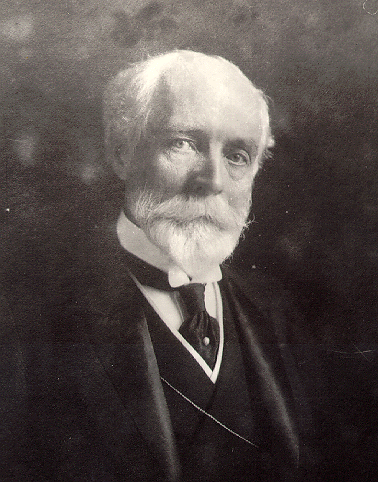
He served as ambassador to France under President Benjamin Harrison from 1889 to 1892, when he joined the GOP ticket with Harrison. They lost to former President Grover Cleveland and Adlai Stevenson. Reid did help Harrison carry Ohio. However, it was actually the first time in history a Republican president didn't win re-election.
Reid went on to serve as ambassador to the United Kingdom under Presidents Roosevelt and Taft.
The Cedarville home that Reid was born in, built in 1823, is the current home of Ohio Gov. Mike DeWine and first lady Fran DeWine.
George Pendleton, the first Ohioan to run for vice president
In 1864, Ohio Congressman George Pendleton unsuccessfully ran for vice president with Democrat George McClellan against President Abraham Lincoln. Before being in Congress, he served in the Ohio Senate.
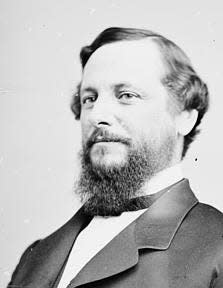
He was born in 1825 in Cincinnati, where his home is a historic site. His father Nathanael Greene Pendleton was also a congressman. He moved to Cincinnati in 1818 and also served in the Ohio Senate.
He supported slavery.
McClellan and Pendleton lost to Lincoln and Andrew Johnson, 55% to 45%. The Democrats only got 21 electoral votes compared to 212 for the Republicans. Pendleton didn't help the ticket win Ohio, which went for Lincoln, 56% to 44%.
Pendleton went for the Democratic presidential nomination in 1868 and nearly won. He also made a run for Ohio governor and lost to future President Rutherford B. Hayes.
He ended his political career serving in the U.S. Senate from 1881-1885. He then served as an envoy to Germany and died in Brussels in 1889. He is buried in Spring Grove Cemetery in Cincinnati.
Another interesting fact about Pendleton is that he was the son-in-law of Francis Scott Key, who wrote the Star-Spangled Banner.
Anthony Shoemaker is the Statehouse Bureau Chief for the USA TODAY Network Ohio.
This article originally appeared on The Columbus Dispatch: JD Vance is Trump's VP pick: Where he stands in Ohio history
